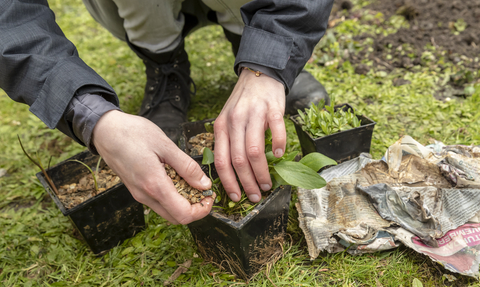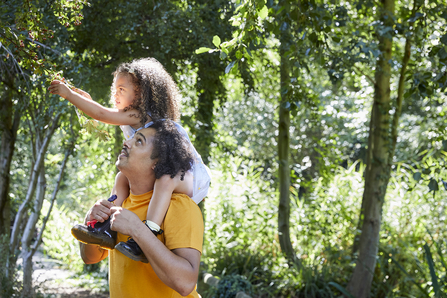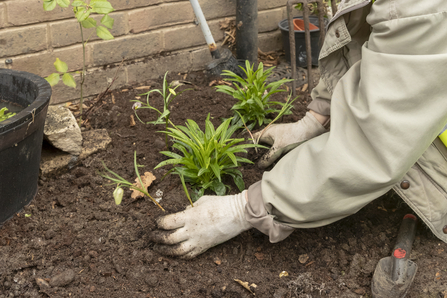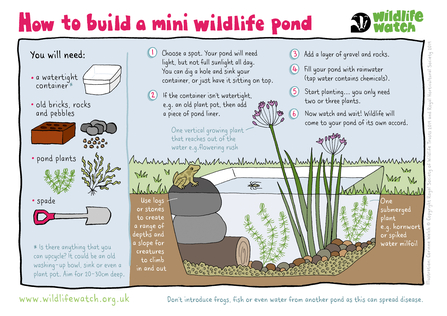
Wildlife gardening
Photo credit: Penny Dixie
In touch with spring
Getting outdoors and experiencing the natural world through touch is a wonderful way to connect with nature in spring. From the feel of grass or the elements on our skin, to getting our hands dirty in the garden, spring offers plenty of new ways to discover wildlife through our senses.
Exploring nature through touch

Credit Arnhel de Serra
We all experience the world through touch, but how often do we stop a moment to take in these sensations, and how they make us feel? This spring, why not slow things down a little and take the time to experience nature through touch:
Go on a spring nature treasure hunt – using our activity sheet as a starting point, try getting outside and see which of these things you can find in nature. How many different types of texture are you able to experience on one walk outdoors?
Create a nature touch box – a fun activity for children who love guessing games! You could put the natural things you’ve found on your spring nature treasure hunt in a box and get your children to feel what’s inside the box and see if they can guess what it is through touch alone!
Walk in nature barefoot – walking barefoot on grass can bring benefits to both our physical and mental health, try it for yourself this spring in your garden or a clean patch of grass in your local park or greenspace.
Take in the sensations of nature – when you step outside today try taking in the sensations you feel, from the warmth of sun on your face, to the wind in your hair or the feel of cool, wet rain on your skin.
Get in touch with nature through wildlife gardening

Photo credit: Penny Dixie
An excellent way to get outdoors and in touch with nature, gardening can benefit both our physical and mental health, as well as helping wildlife too! Whether you have a garden, balcony or window box, there are plenty of ways you can give our city's wildlife a helping hand from home.
Here are some of our favourite ways to garden for wildlife:
Create a vertical garden - gardening doesn’t need to be restricted to the ground, or large areas - you can bring the walls and fences of any space to life for wildlife! A ‘vertical garden’ could mean using wires or trellises to provide a framework for climbing plants, but it can also mean plants living in pots fixed to the wall, hanging baskets, or on ladders and steps. Find out how here
Grow wildflowers to support pollinators - growing flowers not only brings wonderful sights and smells when they bloom, it can also help attract a range of pollinating insects like bees and butterflies to your patch! Find out how here
Create a mini-pond - big or small, creating a wildlife pond is one of the single best features for attracting new wildlife to your garden! Even a small pond can provide a habitat to an interesting range of wildlife including damsel and dragonflies, frogs and newts, and become a feeding and water station for larger wildlife such as birds, hedgehogs and bat! Find out how here







